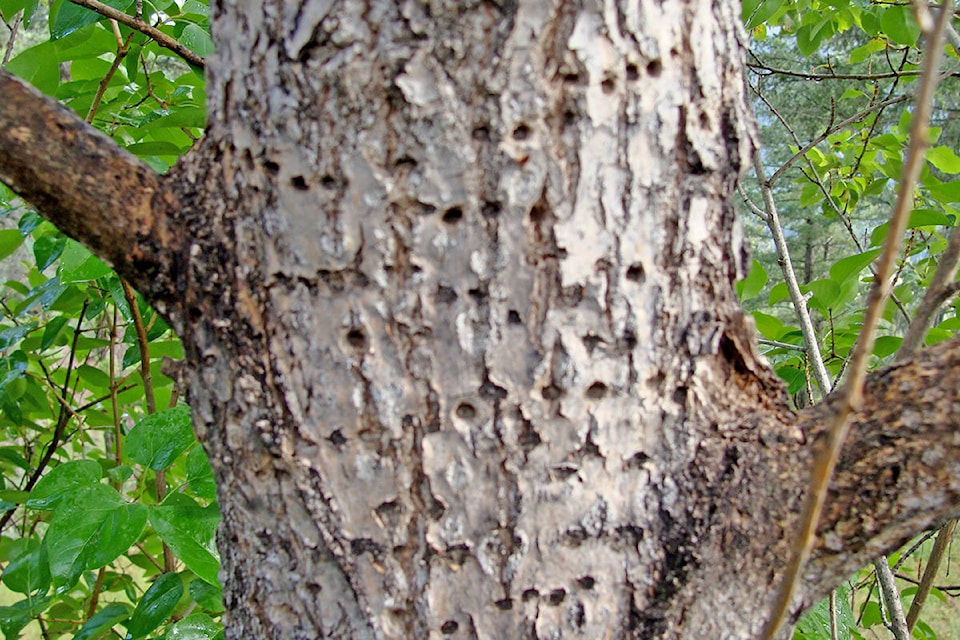As an amateur bird watcher I have always enjoyed the wide variety of woodpeckers (members of the Picidae family) in the western provinces.
My admiration turns to concern when I hear them around my house because of my cedar siding. I have a number of holes made by the largest of the family (the Pileated Woodpecker) and to a lesser extent from the Northern Flicker.
It is amazing how fast these birds can tear chunks of wood off my house to get at the insects hiding underneath.
I have resorted to using hardy plank on my cabin because of woodpecker damage in the past.
While the much smaller sapsuckers are of little concern for wood structures they can be very damaging to our ornamental trees.
They are particularly fond of poplars and maples in our area.
According to Sibleys Guide to Birds we have four sapsucker species in B.C. with the red-naped sapsucker the most common in the interior.
We planted an ornamental poplar tree over 30 years ago that has shown sapsucker feeding for a number of years with some main stems dying because of repeated attacks especially when the holes are close enough and surround (girdling) the tree cutting off the movement of water and food.
A native maple was also attacked with no major damage because the holes were only on one side.
Another introduced poplar species was not as resistant with a number of trees eventually succumbing to the repeated attacks.
According to a USDA paper certain tree species, like birch and maple, are particularly susceptible with mortality increasing up to 40 per cent after being attacked.
A gray birch is even higher at 67 per cent mortality rate. Hemlock and spruce trees are other food favourites but seem more impervious to sapsucker damage, the death rate is at one to three per cent.
Sapsuckers attack living wood to get at the sap inside.
They often return to the tree to increase the size of the holes for more, fresh sap.
Insects, especially those attracted to the sweet sap exuding from sap holes, are often captured and fed to the young during the breeding season.
The same paper suggests that secondary infections from bacteria or fungus can contribute to the death of the trees.
The suggestions for using a wide variety of materials to hang on buildings and trees to deter the woodpeckers may work as an interim measure or for very special trees but in the case of my cedar siding I think it would be very impractical since the birds have holes in a wide variety of places so hanging netting could create a unsightly method of prevention.
I am seriously considering a more resistant product that would also meet the concerns I have about making my house more fire proof.
Woodpeckers no doubt help in the control of insect pests and are important to other birds and animals who also use tree cavities for nesting.
I have had some problem understanding the utility of sapsuckers killing their food source but after observing the trees killed near our house I have noticed that there are already suckers sprouting up which will no doubt provide another more succulent food source in a few years.
As shown in the attached picture the surviving poplar produced a much more fibrous bark following an extensive attack no doubt creating a less desirable feeding area so killing some trees to produce more desirable feeding sites is probable a good long term solution.
Jim Hilton is a professional agrologist and forester who has lived and worked in the Cariboo Chilcotin for the past 40 years. Now retired, Hilton still volunteers his skills with local community forests organizations.
